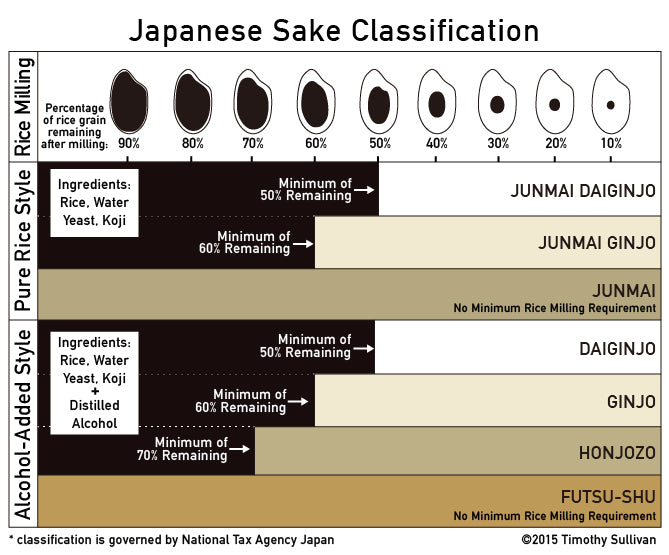Popular Products
- $51.88
$68.00- $51.88
- 单价
- / 每
- $104.88
$149.90- $104.88
- 单价
- / 每
- $45.88
$59.90- $45.88
- 单价
- / 每
- $98.88
$139.90- $98.88
- 单价
- / 每
-
- SAKES
- All Sake
- Sake Category
-
Popular Brands
- Popular Brands
- Dassai獺祭
- Juyondai十四代
- Kubota久保田
- Hakkaisan八海山
- Choya梅酒
-
- WINES
- All Wine
-
Wine Category
- Wine Category
- Red Wine
- White Wine
- Rose Wine
- Champagne
- Sparkling Wine
- Wine Region
-
Wine Offers
- Wine Offers
- Less Than $40
- From $40 To $60
- From $60 To $100
- Over $100
-
- SPIRITS
- All Spirits
-
Product Category
- Product Category
- Shochu
- Whisky
- Liquor
- KOI(濃い) Cocktail
- Popular Brands
-
- READY-TO-DRINK
- All Ready To Drink
-
Product Category
- Product Category
- Beer
- Highball & Chuhai
- Non-Alcoholic
- Popular Brands
-
- COFFEE & TEA
- All Coffee & Tea
-
Product Category
- Product Category
- Regular Coffee
- Instant Coffee
- Coffee Drink
- Regular Tea
- Tea Drink
- Other Drink
- Popular Brands
-
- LIFESTYLE
- All Daily Supply
- Snack
- Grocery
- Home
Unveiling the Finest Tiers of Japanese Sake: Junmai Daiginjo, Daiginjo, Junmai Ginjo, Ginjo
Nestled within the rich tapestry of Japan's cultural heritage lies sake, a beverage that has captivated palates for centuries with its intricate flavors and storied traditions. Far from being a mere drink, sake is an art form, a testament to the meticulous craftsmanship and dedication of generations of brewers. Its journey from humble beginnings to a globally - recognized libation is steeped in history, with each sip offering a glimpse into the soul of Japan.
As we embark on this exploration of sake, we'll delve into the upper echelons of its classifications: junmai daiginjo, daiginjo, junmai ginjo, and ginjo. These aren't just labels; they represent the pinnacle of sake - making, each with its own unique characteristics shaped by the careful selection of rice, the precision of the polishing process, and the delicate balance of brewing techniques. Join me as we uncover the secrets behind these exceptional sakes, understanding how they reflect the essence of Japanese culture and the artistry of its brewers.

Junmai Daiginjo: The Epitome of Pure Craftsmanship
Junmai daiginjo is the crème de la crème of sake. The term "junmai" means pure rice, indicating that no distilled alcohol has been added during the brewing process. For junmai daiginjo, the rice is polished down to an astonishing 50% or less of its original size. This meticulous polishing removes the outer layers of the rice grain, which contain proteins, fats, and other elements that can affect the flavor.
The result is a sake that is incredibly delicate and fragrant. On the nose, you'll often encounter complex aromas of fresh flowers, ripe fruits like melons and pears, and sometimes even a subtle hint of herbs. The flavor profile is light - bodied, with a smooth and clean finish. It's the perfect choice for those who appreciate the subtleties of flavor, and it pairs exquisitely with high - end sushi, sashimi, and other refined Japanese dishes.
Daiginjo: A Symphony of Aromas and Flavors
Daiginjo shares many similarities with junmai daiginjo, but with one key difference: it may contain a small amount of distilled alcohol added during brewing. This addition is carefully regulated and is intended to enhance the sake's aroma and flavor. The rice used for daiginjo is also polished to at least 50% of its original size.
Daiginjo offers a complex bouquet of aromas, often including floral notes, hints of tropical fruits, and a touch of sweetness. Its flavor is smooth and elegant, with a light body that allows the delicate flavors to shine through. Daiginjo is a popular choice for special occasions and can be paired with a variety of dishes, from delicate seafood to flavorful tempura.
Junmai Ginjo: Balanced Elegance
Junmai ginjo, like junmai daiginjo, is made without the addition of distilled alcohol. However, the rice for junmai ginjo is polished to at least 60% of its original size. This slightly less extensive polishing results in a sake that has a bit more body and a more pronounced flavor compared to junmai daiginjo.
The aroma of junmai ginjo typically features citrusy notes, apples, and sometimes a hint of honey. It has a well - balanced flavor, with a harmonious blend of sweetness, acidity, and umami. Junmai ginjo can be enjoyed both chilled and at room temperature, making it a versatile option for pairing with different types of food, such as grilled fish, grilled chicken, and lightly seasoned vegetables.
Ginjo: Aromatic and Approachable
Ginjo sake allows for the addition of distilled alcohol during the brewing process, similar to daiginjo. The rice used for ginjo is polished to at least 60% of its original size. This type of sake is known for its strong and appealing aroma, which often includes fruit, floral, and sometimes a touch of spice.
On the palate, ginjo has a relatively light body and a refreshing taste. It's a great choice for those new to sake, as its approachable flavor profile makes it easy to appreciate. Ginjo pairs well with a wide range of Japanese and Western dishes, making it a popular option in many restaurants.
In conclusion, whether you prefer the purity of junmai daiginjo, the enhanced aromas of daiginjo, the balanced elegance of junmai ginjo, or the approachability of ginjo, each of these sake classifications offers a unique and delightful drinking experience. Exploring these different types is not only a journey through the world of sake but also an exploration of the rich cultural heritage and craftsmanship behind Japanese brewing.
- 选择一个选项会导致整个页面重新加载。

![[什锦] 獭祭“45”纯米大吟酿 180ml/300ml/720ml/1800ml 16%](http://saketime.com/cdn/shop/files/dassai45720paper_533x.png?v=1760341820)
![[什锦] 獭祭“45”纯米大吟酿 180ml/300ml/720ml/1800ml 16%](http://saketime.com/cdn/shop/products/e946bb8e268d09e61c393a9670cc1105_533x.jpg?v=1760341924)
![[什锦] 獭祭“45”纯米大吟酿 180ml/300ml/720ml/1800ml 16%](http://saketime.com/cdn/shop/files/1_6874f0ff-1208-4e01-a292-89a8e859b1d5_533x.png?v=1747881593)
![[什锦] 獭祭“45”纯米大吟酿 180ml/300ml/720ml/1800ml 16%](http://saketime.com/cdn/shop/files/wecom-temp-82255-0e6289411f0caeefbd890cc87d491459_533x.jpg?v=1760344306)
![[什锦] 獭祭“45”纯米大吟酿 180ml/300ml/720ml/1800ml 16%](http://saketime.com/cdn/shop/products/501b819a956236acce8b80f20dbe0068_533x.jpg?v=1760341924)
![[什锦] 獭祭“45”纯米大吟酿 180ml/300ml/720ml/1800ml 16%](http://saketime.com/cdn/shop/files/dassai451800_533x.png?v=1708507354)
![[什锦] 獭祭“45”纯米大吟酿 180ml/300ml/720ml/1800ml 16%](http://saketime.com/cdn/shop/files/preview_images/d545ccd7d22248e395ae6f62bdb979f2.thumbnail.0000000000_533x.jpg?v=1760344020)